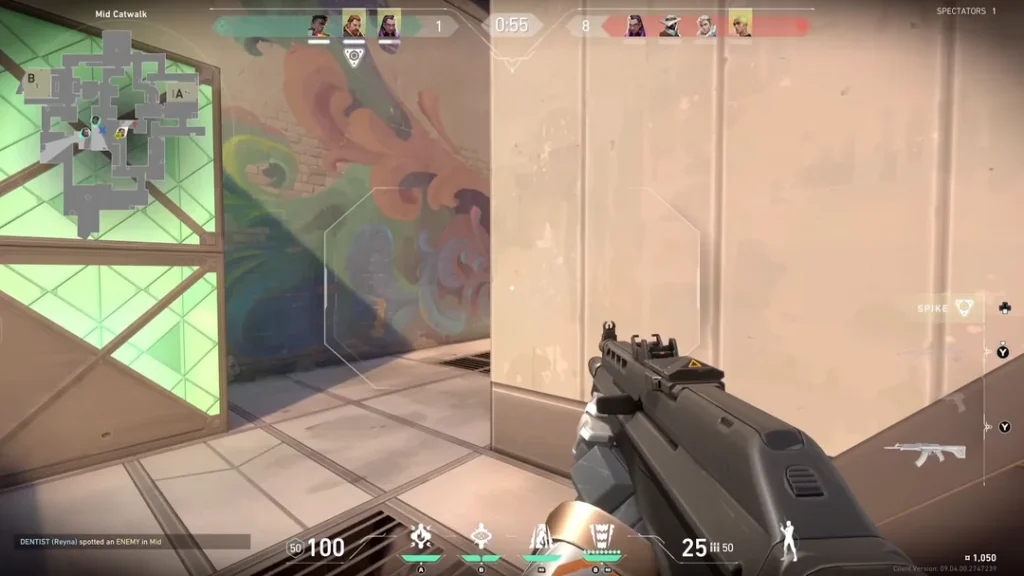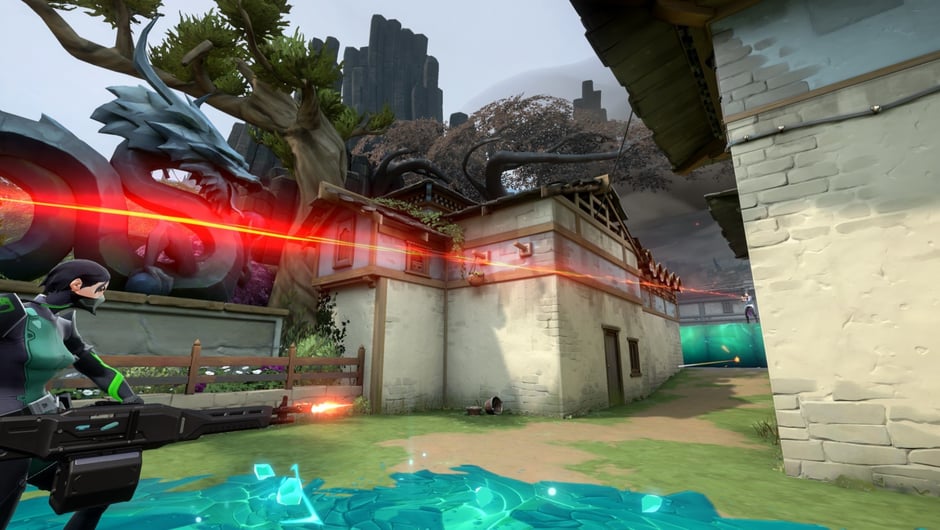During their ranked climb, most Valorant players spend hundreds of hours trying to refine their aim, crosshair placement, and spray control. While all of these are undoubtedly key elements of improving your overall mechanical skill in FPS games, they can quickly lose their impact if not complemented by another core aspect – movement.
While aim, crosshair placement, and utility usage generally top the list of priorities for any Valorant player looking to improve their rank, the importance of movement often gets overlooked in the process. Movement is undoubtedly one of the most underrated yet highly impactful aspects of high-level Valorant gameplay. Good movement can not only help you in getting out of sticky situations, but it also works alongside your aim to help you land more consistent headshots.
If you’re one of the Valorant players who find themselves hitting a plateau despite putting hundreds of hours in aim trainers, then the first thing you should focus on is improving your movement. Once you’ve mastered this fundamental mechanic, you’ll find yourself gliding through the ranking spectrum of Valorant in no time.
The Role of Movement in Valorant

The fact that shooting accuracy in Valorant is tied to movement isn’t exactly a secret. Much like in Counter-Strike, Valorant rewards a “stop and shoot” playstyle far more than “run and gun.” Crouching can help you further improve your accuracy and make sprays easier to land, while even walking slowly in any direction will make your bullets inaccurate.
And then there’s peeking, which is another vital part of movement in Valorant. Techniques like jump peeking, jiggle peeking, and shoulder peeking are essential for gathering information without getting a headshot in the process.
Mastering movement is essential for not only winning duels with well-timed counter-strafes, but it’s also the key to safely gathering intel, detecting enemy rushes, and baiting out shots from the enemy AWPer before entering a bombsite.
There are also technical factors, such as server latency and tick rate, that favor good movement over raw aim, often giving an edge to players who know how to position themselves strategically and time their peeks effectively.
Why Most Players Undervalue Movement
If having good movement in Valorant is so important, why is it often undervalued among its player base?
The answer to this is simple – good movement isn’t nearly as flashy as crisp 1-taps, multi-kill spraydowns, or an AWP flick from across the screen.
Whether you’re watching a highlight of your favorite Valorant pro from the last Masters event or checking out a clip of a streamer pulling off a 1v4 post-plant clutch, it’s easy to become so tunnel-visioned on the aim that you ignore the finer details like the movement that made those plays possible.
Most streamers, YouTubers, and even some coaches tend to spotlight aim gods over players who rely on their movement to get consistent frags. Add to that the growing obsession with aim trainers like Aim Lab and Kovaaks, and it’s easy to see how practising movement can take the backseat.
Lastly, unless you’re already playing in moderate-high ELOs (above Diamond), you’ll hardly get punished for having bad movement. But once you climb the ranks, that bad habit swiftly catches up with you, and you become a sitting duck for opponents who are in the higher ranks of the competitive spectrum.
Using Movement To Win Games
Now that you’re aware of the importance of having good movement in Valorant, it might be a good time to see how you can utilize it to win your ranked games.
To do so, you’d first have to learn the difference between micro-movements and macro-movements. The former consists of aspects that generally help you win duels like strafing unpredictably, counter-strafing before shooting, crouching, and jump-spotting, while the latter includes effectively rotating, positioning, and flanking.
Counter-strafes can help you land your bullets more frequently while making yourself a difficult target to hit, while crouching at the right moment can help you throw off enemy crosshair placement and avoid a headshot yourself. Jump spotting is used to gather early info on enemy rushes, and bait out shots from someone holding an important choke point.
Apart from the aforementioned examples, smart movement can also be used to bait out important utilities like a Breach stun or a Sova dart, disrupt enemy crosshair placements so your teammates can get a free entry frag on a bombsite, and it can also boost your overall survivability in combat.
Macro-movements generally come with game sense, and the more you play, the faster you’ll learn them. However, micro-movements require consistent practice to master, and learning to utilize them will give you a huge boost in your effectiveness in combat.
In this article, we’ll primarily focus on micro-movement and how you can use it to give yourself the edge on the battlefield.
How To Actively Train Movement

If you’re ready to start improving your movement in Valorant, there are a number of tools readily available for you to use.
The first thing I’d recommend doing is hitting the in-game range and finishing the movement course. Remember, you’ll have to finish it, and not just jump in there for a few minutes. While the course starts off quite easily, it can prove to be quite difficult for even experienced players in the later stages. Once you’re able to complete it, you should be well prepared to handle the finer aspects of movement in Valorant.
Now, you can start working on your counter-strafes. To improve your counter-strafing in Valorant, you can either boot up the range once again or hop right into a Deathmatch. In the range, set the bot difficulty to medium (or start off with easy and switch to medium later) and actively focus on landing headshots while constantly staying in motion. You have to practice stopping your movement by pressing the opposite direction key just before you shoot, reinforcing the timing of proper counter-strafing and turning it into muscle memory.
Once you’re done with the range drills, hop on a Deathmatch and work on counter-strafing against real players. Don’t fixate on getting kills – Deathmatch is all about improving your skills, not winning.
Lastly, if you’re a Duelist main, hop into a custom game and practice planning and executing your site entries using Raze satchels, Neon sprint, or Jett dash. Focus on how you break enemy sightlines, create space for your team, and drag enemy crosshairs.
Also, before queuing for a competitive game, make it a habit to do some warm-up routines to practice your movement alongside your aim.
By following these steps, you should be able to see notable progress on your movement skills and win a lot more duels during your ranked games.
Verdict
Just because movement doesn’t show up in the post-game scoreboard doesn’t mean that you can get away with ignoring it. Smart movement can help you secure more kills, make yourself a trickier target to hit, and even help your team secure important choke points.
Most duels in Valorant are decided before a single bullet is fired from either gun. It’s easy for players who are extremely good at strafing to get away with subpar aim, simply because their movement throws off their opponent’s crosshair placement and timing, giving them the upper hand before the fight even begins.
So the next time you lose a 1v1, take a moment to ask yourself: was it really your aim that let you down, or were you just standing still and making yourself a sitting duck? Make sure to record replays from your own ranked games and observe them to identify bad movement habits. Don’t fixate on your aiming mistakes, but try to take note of how you could’ve utilized your keyboard to avoid certain deaths or land better shots.
As you develop better movement habits, you’ll find your aim improving naturally, and your duels becoming easier to win. Stick with it, and you might just reach that dream rank sooner than you think.












Leave a Reply